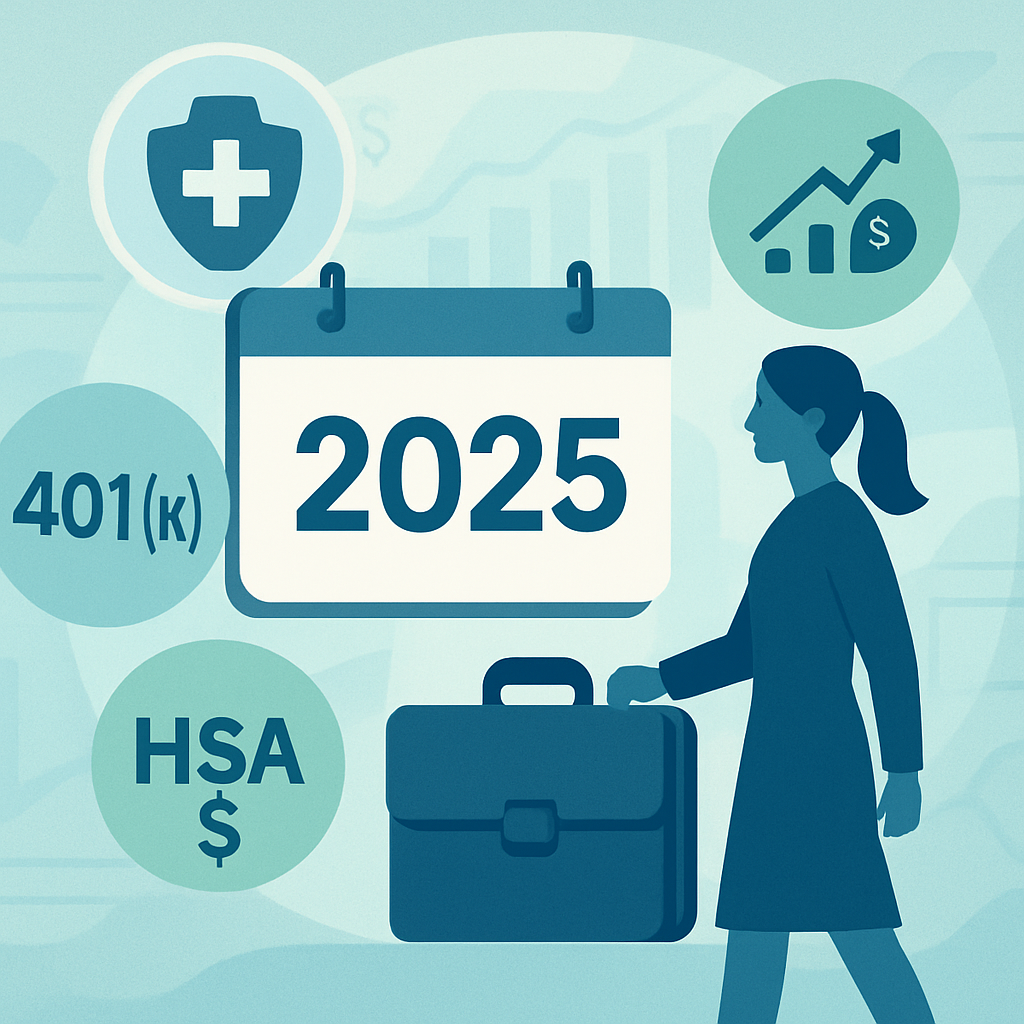Changing jobs is exciting, but your benefits transition—health insurance, HSA, 401(k), ESPP, FSA, and other perks—can have lasting financial impacts. Use this step-by-step guide to ensure nothing slips through the cracks.
1. Health Insurance: Don’t Get Caught Without Coverage
Know your options during a gap:
- COBRA: Extends your old employer’s plan up to 18 months, but you pay the full premium plus a 2% fee.
- Marketplace (ACA): A job change qualifies you for a special enrollment period—often cheaper than COBRA, especially if your income drops.
- Spouse’s Plan: Check spousal employer plans for potentially lower costs and easier transitions.
Pro tip: If you’re healthy and expect low medical costs, consider a High Deductible Health Plan (HDHP) for tax-advantaged HSA contributions. If you anticipate higher expenses, PPO or HMO plans may offer better protection.
2. Health Savings Account (HSA): Avoid Surprises
- You own your HSA—keep it, roll it to a provider of your choice, or start a new one if eligible.
- Contribution limits apply across all employers for the year:
- Individual: $4,300
- Family: $8,550
- Catch-up (age 55+): + $1,000
- Track year-to-date contributions to avoid overfunding, which leads to taxes and penalties. Withdraw any excess before filing your tax return.
- Save your receipts: You can claim tax-free reimbursements for qualified expenses years later—even after switching jobs.
3. 401(k), IRAs, and Rollovers: Keep Your Savings Growing
- Employee deferral limit (2025): $23,500
(Catch-up: $7,500 for ages 50–59/64+, and $11,250 for ages 60–63) - Combined employee + employer max: $70,000 (or $77,500 if age 50+ with both catch-ups)
- Your limit is aggregate across ALL 401(k)s in a year—monitor contributions from both old and new jobs.
- Options for your old 401(k):
- Leave funds if allowed (typically $5,000+ balance).
- Roll over into your new employer’s 401(k).
- Roll over into a Traditional IRA for more flexibility.
- If you have after-tax 401(k) money, ask about a Mega Backdoor Roth rollover.
- Over-contribution warning: Exceeding limits means extra taxes and re-filing hassles.
4. Flexible Spending Account (FSA): Use It or Lose It
- FSAs typically terminate with your job. Spend your funds before leaving.
- Some employers offer a grace period — always ask HR.
- 2025 FSA limit: $3,300 (Healthcare)
5. Employee Stock Purchase Plan (ESPP) & Stock Options: Take Action
- If eligible, review the discount, enrollment windows, holding periods, and tax rules (qualifying vs. disqualifying disposition).
- Vesting Schedules and Deadlines: Many options and ESPP shares expire or must be exercised shortly after your exit.
- Key tip: ESPPs can build wealth, but diversify to manage concentration risk.
6. Other Critical Benefits to Review
- Life and Disability Insurance: Employer-provided coverage often ends. Replace essential policies to protect your family.
- Commuter Benefits: Use up transit/parking funds before leaving—they usually aren’t transferable.
2025 max: $325/month - Unused Perks: Audit for FSA cash, unpaid vacation, vested stock, and other leftover benefits from your old employer.
7. Adjust Your Investment Allocation
- Less stable job? Lower your equity risk.
- Larger salary? You might afford to take more risk, or you may want more liquidity if your cost of living is rising.
- New equity compensation? Watch for over-concentration in company stock.
- Use this opportunity to rebalance your retirement and brokerage portfolios as needed for your new reality.
Quick Reference Table: Key 2025 Contribution Limits
| Account/Benefit | 2025 Limit | Catch-Up/Eligibility | Combined Employee + Employer Max |
|---|---|---|---|
| HSA (Individual) | $4,300 | 55+ / $1,000 | N/A |
| HSA (Family) | $8,550 | 55+ / $1,000 | N/A |
| 401(k) Employee Deferral | $23,500 | 50–59, 64+ / $7,500; 60–63 / $11,250 |
$70,000 / $77,500 (with catch-up) |
| FSA (Healthcare) | $3,300 | N/A | N/A |
| Commuter (Transit/Parking) | $325/month | N/A | N/A |
Final Tips
- Stay organized: Write down deadlines, rollover windows, and contribution checks.
- Talk with both HR teams: Get details on benefit end/start dates, eligibility, and matching schedules.
- Consult a professional: If unsure about rollovers or tax implications, seek expert advice.
This article is for informational purposes only and not meant as professional financial or tax advice. Always consult a qualified advisor regarding your unique situation.

